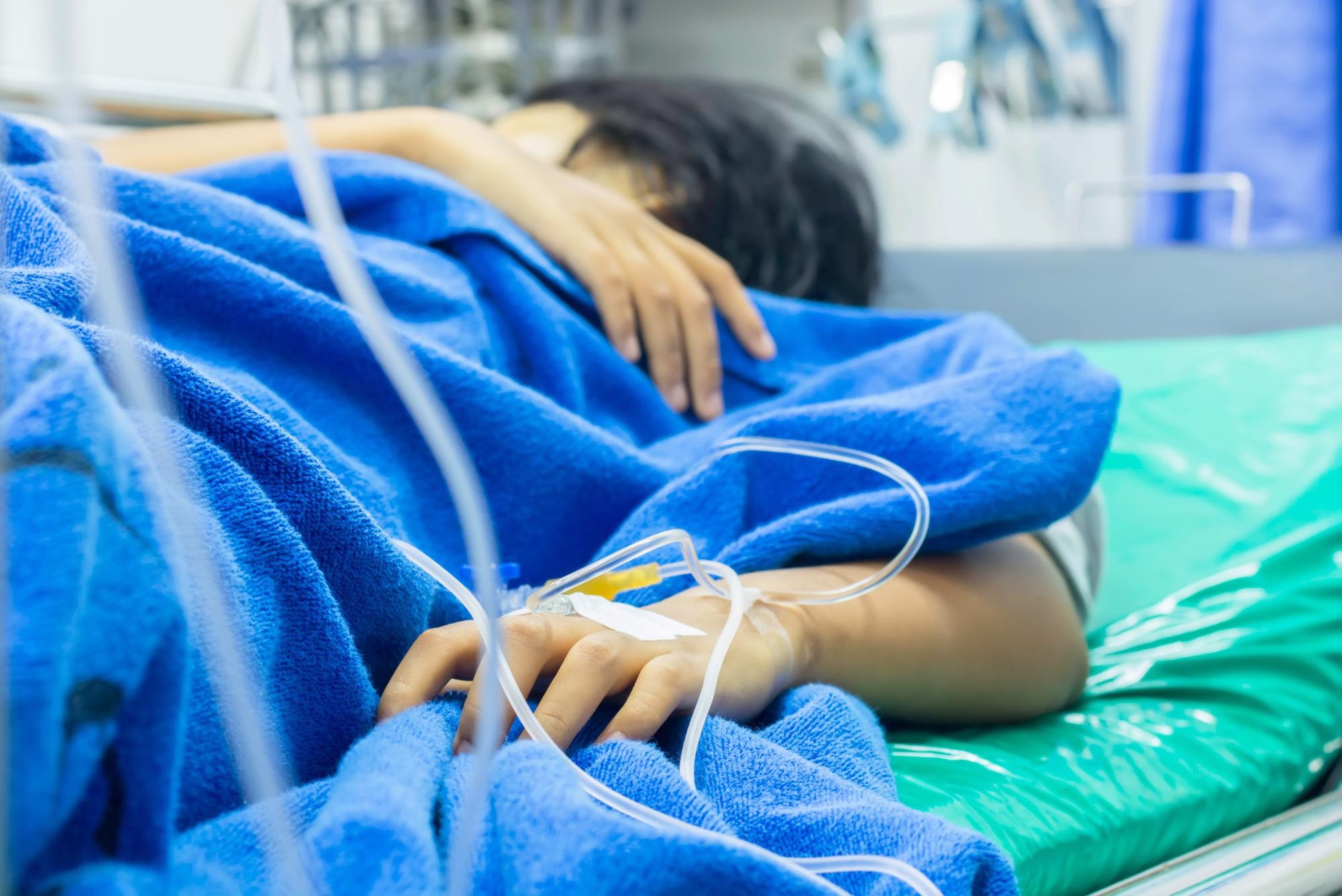 By Neha MathurReviewed by Danielle Ellis, B.Sc.Jun 2 2022
By Neha MathurReviewed by Danielle Ellis, B.Sc.Jun 2 2022In a recent study published in Emerging Infectious Diseases, researchers investigated whether coronavirus disease 2019 (COVID-19) vaccination effectively protected adolescents in the United States (US) from multisystem inflammatory syndrome (MIS).
 Study: Multisystem Inflammatory Syndrome after Breakthrough SARS-CoV-2 Infection in 2 Immunized Adolescents, United States. Image Credit: Zetar Infinity/Shutterstock
Study: Multisystem Inflammatory Syndrome after Breakthrough SARS-CoV-2 Infection in 2 Immunized Adolescents, United States. Image Credit: Zetar Infinity/Shutterstock
Background
Although COVID-19 vaccination might be offering some protection against multisystem inflammatory syndrome in children (MIS-C), there is a lack of enough scientific evidence supporting the same. Previous studies have not investigated whether a two-dose regimen of COVID-19 vaccines decreases the risk of developing MIS-C after a breakthrough severe acute respiratory syndrome coronavirus 2 (SARS-CoV-2) infection. Since vaccine effectiveness might differ against newer SARS-CoV-2 variants compared to the older ones, it is crucial to assess MIS-C rates after breakthrough infections.
The US Centers for Disease Control and Prevention (CDC) approved the use of messenger ribonucleic acid (mRNA)-based COVID-19 vaccine, BNT162b2, for children over 16 years and those between 12 to 15 years in December 2020 and May 2021, respectively. Notably, in the US, 68% of children in the 12 to 17 years-age-group had been fully vaccinated by April 2022.
Case study
In the present case study, researchers examined two MIS-C cases in fully vaccinated children with breakthrough SARS-CoV-2 infections in the US.
First, they examined the case of a 14-year-old boy who contracted a SARS-CoV-2 breakthrough infection after one month of completing the two-dose series of the BNT162b2 vaccine. He had cough and congestion for three days and tested positive for SARS-CoV-2 by reverse transcriptase-polymerase chain reaction (RT-PCR). One month after his COVID-19 recovery, he again developed myalgia and headache. The boy had a fever, bloodshot eyes, diarrhea, rash, emesis, and red, cracked lips within seven days.
On day 10 of his illness, the laboratory tests revealed thrombocytopenia, hyponatremia, and lymphopenia. Additionally, the researchers observed elevated levels of N-terminal pro-brain natriuretic peptide (NT-proBNP), C-reactive protein (CRP), and liver enzymes. An echocardiogram (ECG) also revealed trivial pericardial effusion.
While the patient’s COVID-19 test results were positive, tests for other infectious conditions were negative. Overall, case one patient met the CDC MIS-C criteria. A second dose of infliximab on the third day of hospitalization improved his condition. After five days of hospitalization, ECG showed no effusion; then, doctors discharged the patient from the hospital. Infectious diseases and cardiology follow-up continued for three and six weeks after hospital discharge, respectively. The patient was persistently fatigued; additionally, an ECG showed an enlarged left main coronary artery.
The second examined case was of a 14-year-old girl who developed an illness after three months of completing the two-dose BNT162b2 vaccination series. She had a fever, fatigue, cough, myalgias, headache, and nausea, and her condition worsened, although she tested negative for SARS-CoV-2 and influenza. She tested positive for SARS-CoV-2 RT-PCR only after 12 days, and doctors prescribed amoxicillin and discharged her.
Two days later, the patient returned to the hospital and complained of dyspnea and hypoxemia. She received remdesivir, but doctors had to discontinue medication as it affected her liver function. After being discharged, the patient again developed a new diffuse rash, emesis, and recrudescent fever. Additionally, her laboratory tests revealed elevated levels of CRP, liver function, D-dimer, NT-proBNP, and creatinine. Computed tomography and abdominal ultrasound showed enlarged kidneys. Therefore, upon readmission, the doctors prescribed clindamycin and ceftriaxone treatment.
On day 19 of hospitalization, she was diagnosed with MIS-C. Her fever quickly subsided, and laboratory results improved as she received intravenous immunoglobulin and methylprednisolone. Although doctors discharged her nine days later, her follow-up continued. Although she experienced fatigue, her condition improved, and her ECG, laboratory results, and infectious and rheumatologic test results were all normal.
Conclusions
Only a few studies have investigated the effects of COVID-19 vaccination on MIS-C. For instance, a US review reported MIS-C onset in an average time of five days from the second vaccine dose in 71% of patients with evidence of SARS-CoV-2 breakthrough infection. In 21 patients with MIS-C after COVID-19 vaccination, 14% and 38% needed mechanical ventilation and vasopressor, respectively.
Based on Brighton's collaboration MIS-C case definitions, the authors identified a definitive MIS-C diagnosis in the case of the first patient. Although MIS-C was probable in the second patient, more symptoms indicated acute COVID-19 with hyperinflammation. To conclude, both the cases described in the current study did not meet COVID-19 vaccine-associated MIS based on Brighton criteria.